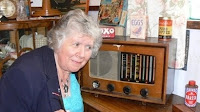Roland System 100m - Small and Mighty!
see part one of this blog entry here
Old Roland synths are known to hold a legacy. Not to be confused for their digital replicas (JP8000, GAIA, SH201 to name a few). These replicas pale in comparison, desperately trying to recreate the magic of the Jupiter 8, or SH2, and coming up thin.
Old Roland synths are known to hold a legacy. Not to be confused for their digital replicas (JP8000, GAIA, SH201 to name a few). These replicas pale in comparison, desperately trying to recreate the magic of the Jupiter 8, or SH2, and coming up thin.
The System 100m lives up to its legacy and royal status by commanding attention with It's punchy, tight and thick sound. Its drippy square wave and screaming resonance can rattle a room like nothing else.
This synthesizer has a colorful history. Released in 1978, it caught the eye of many great artists. Artists such as Vince Clarke, Depeche Mode, Daniel Miller, Human League, Nitzerebb, and Orbital to name a few. Not only was this synth designed to be flexible and portable, but its also as big sounding as its sibling, the system 700.
A standard System 100m consisted of 5 modules : Dual VCO (112), Dual VCF (121), Dual VCA (130), Dual Envelope/LFO (140), Ringmod/Noise/LFO (150).
A single module often has several functions. For example the Dual VCF contains 2 identical filters with resonance and hi pass switch.
One of its greatest assets was that it was simple to expand. You could purchase extra modules from Roland to make your system gigantic. Some modules we would like to get for this are the sequencer (182) and the Delay/Phaser (172) modules. But currently the unit we have is the standard system.
Matt picked this one up off the local craigslist site. The original owner of this machine used it in an 80's cover band. We are now the second owners.
Where the system 100m shines is through its ability to patch anything to anything. The results are precise yet un-expectable. The many rows of multiple jacks at the bottom allow you to copy cv signals : as many as you have patch cords for.
To make things more interesting, the 100m is located next to our 2600 and SEM for added flexibility. With patch cords running between the 3 synths, some unexplainable sounds will be coming from our studio.
The track I made with this synth is all sounds tracked one at a time into protools dry with no FX. So everything you are hearing is pure system 100m being sequenced with Protools through midi/cv, tracked into the Mytek convertor and mixed through the Toft atb..
We gladly give a warm welcome to our system 100m to the Repairlab. May many great patches be made.
Mark




